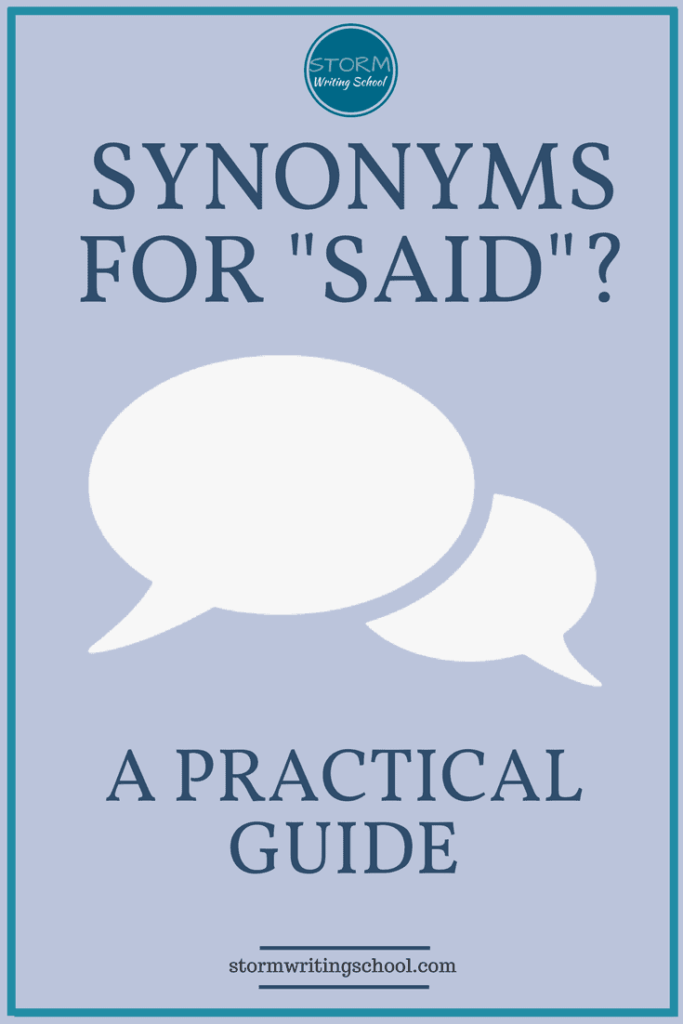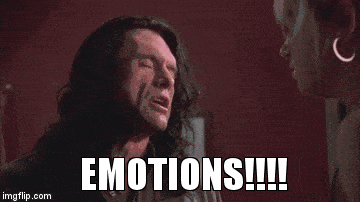Should you use saidisms or stick with having all your dialogue tags be “says” and “said”?

To Said or not to Said
I’ve seen this come up in writers’ groups on various social media platforms. Some claim, “Said is dead” and post an image of synonyms, like accuse, extol, quip, and huff. The implication is that you should be more inventive with all your dialogue tags.
On the other end of the spectrum are the folks who claim you shouldn’t use any dialogue tag other than “said.” They even have a name for all those big words other than “said”: “saidisms.”
If I were to err on one side of the debate, I’d fall in with the “just use said” folks, not with the avoiders. But I’m not opposed to all saidisms.
Here’s the thing. Words other than said often come across as exaggerations. When characters are exclaiming and avowing and expostulating and declaring, the whole scene takes on an over-the-top quality.

People who use saidisms intend for them to show how the character is speaking. But here’s the rule of thumb: verbs of expression can help us see the physical act of speaking, but they’re not very good at showing us the emotional or mental processes behind the speaking.
Non-“Said” Dialogue Tags
Consider the tags below in an exchange between Josie and Samantha. I’ll give you three ways Josie might ask her question and three ways Samantha might answer.
Josie:
“So why are you here?” Josie whispered.
“No, really. What brings you here?” Josie prodded.
“Ha! And why exactly are you here?” Josie cajoled.
Samantha:
“Um, I, uh,” Samantha stammered. “I can’t really say.”
“It’s not something I can really talk about,” Samantha muttered.
“Same reason we’re all here,” Samantha sermonized. “Because the system’s crooked.”
Whispered doesn’t seem at all problematic to me. It’s conveying something about how the line was delivered—something we wouldn’t necessarily be able to infer simply through the spoken line itself.
Prodded feels pretty redundant. The line of dialogue itself seems to be showing some insistence, so why tell us?
Cajoled is also just telling us what the line itself is clearly showing. So it risks insulting the reader’s intelligence.
I don’t see either prodded or cajoled as being egregious telegraphing of the dialogue line, but neither seem necessary. That is, they’re not helping us understand anything more about the action or mindset of the speaker.
Now, once we get to Samantha’s responses, we find an interesting comparison between stammered and muttered. To me, stammered seems unwarranted because the line itself conveys some stammering. But muttered adds a new understanding to the way the line is spoken.
And that’s perhaps the key here. If the dialogue tag adds some new understanding and isn’t insulting the reader’s intelligence, then it is “acceptable.”
But then we get the final Samantha response, which maybe takes that new understanding too far. Sermonized feels like it’s commentary from the author; in other words, it’s an interpretation. You want to let the readers do the interpreting and judging. Readers like to co-create the story and to make inferences. Any time the author intrudes by spelling out the inferences the reader can make, she risks the tiniest amount of alienation of the reader.
Sermonize is a judgment; muttered and whispered are simply conveying concrete physical reality; stammered, cajoled, and prodded are all telegraphing what’s already implied through the line.
The Takeaway
Rarely do you want to draw attention to the dialogue tag itself. Whatever dialogue tag you use should feel natural and not steal the show. Yes, the way a character delivers a line may be important, but you can earn that through situational context or through the spoken words themselves.
A saidism is usually going to fail to illuminate anything other than the physical act of speaking the line. So mostly stick to the invisible dialogue tags (say, ask; maybe occasionally reply, question, or answer, etc.), and try to keep variations of say and ask to descriptors of line delivery that aren’t implied by the dialogue itself (whisper, shout, scream, yell, mutter, mumble, etc.).
Some guidelines, then:
- “Said” is mostly invisible, so don’t feel a need to vary it much. You don’t want dialogue tags drawing too much attention.
- Dialogue tags in general are often overused, however. Don’t include one unless it’s necessary.
- Remember you can use descriptions of character action (known as action beats or stage business) instead of dialogue tags. These often help you imply the character state of mind.
- Use saidisms that reveal the physical act of speaking.
- Be wary of tags that attempt to express a character’s state of mind or otherwise make judgments for the reader.
- Be wary of using a tag that is implied by the line of dialogue itself.
- Oh, and one I just remembered: your dialogue tags should not be physical actions other than speaking actions. “Hey,” he smiled? Nope. “That’s wonderful,” he nodded? No. People do not smile and nod words.








One Response
I use action and observational tags, before, between and after dialogue. I leave off tags when it’s obvious who’s talking. I also use, said, and whispered.